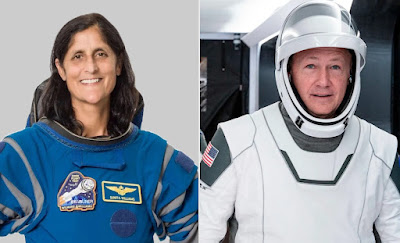The Autumn 2025 issue of ROOM Space Journal of Asgardia has just been published, delivering another wide-ranging exploration of the ideas, technologies and policies shaping humanity’s future in space.
On the cover, ‘Cyber safety in Earth orbit’ signals one of the issue’s central themes: how artificial intelligence (AI) is rapidly transforming space operations while simultaneously creating unprecedented vulnerabilities.
In his special report, Sylvester Kaczmarek dissects the complex web of risks associated with AI-driven spacecraft and ground systems, from adversarial attacks and data poisoning to the possibility of hostile control. His analysis underscores the urgent need for resilience and governance in this new era of spaceflight.
Editor-in-Chief Clive Simpson sets the scene in his Foreword, describing the sector as entering a “season of reckoning.” With the European Space Act newly tabled and the fifth European Space Forum in Brussels framing debates, Simpson warns of the dangers of “sleepwalking into orbital anarchy” without clear international rules. His report from Brussels details Europe’s bid to unify fragmented governance and enhance competitiveness while ensuring sustainability in orbit.
Policy and law are major threads throughout this edition. UK Member of Parliament George Freeman argues for a “Geneva Convention for Space” in a wide-ranging opinion piece, stressing that regulation is not the enemy of innovation but a necessary foundation for the commercial space age.
Legal specialists Molly Doyle and Lauren Napier examine what happens when space debris falls back to Earth, using a recent real-life case in Florida to test the adequacy of international liability frameworks.
Meanwhile, Stephen Carr-Baugh explores the challenges of regulating high-altitude platforms that operate in the poorly defined zone between aviation and outer space.
Other features look outward across the solar system. Former NASA Chief Scientist James Green introduces readers to the concept of cosmic weather – vast, long-term cycles of galactic forces that may influence Earth and life itself.
Dr Ingrid Daubar, Project Scientist for NASA’s Europa Clipper mission, explains why Jupiter’s icy moon remains one of the most tantalising targets in the search for extraterrestrial life. In another conversation piece, ROOM’s Steve Kelly speaks with MIT astrophysicist Sara Seager about the prospects for discovering signs of life beyond our solar system.
Closer to home, ROOM continues its tradition of in-depth reporting on Europe’s space ambitions. Simpson also covers Vigil, ESA’s planned space weather mission at the strategically important L5 Lagrange point, which is expected to gain the approval of European ministers later this year.
The issue also includes Nick Spall’s assessment of the UK’s shifting role in human spaceflight, James Woodburn’s survey of the transformation of satellite technology, and Rico Behlke’s look at the revolution promised by software-defined satellites.
International perspectives are provided by veteran space writer Brian Harvey, who charts Iran’s steady progress as a space power despite decades of sanctions, and by contributions from Russian researchers Yuri Bubeev, Alexander Smoleevsky and Olga Manko on the biomedical mystery of how long-duration spaceflight affects astronaut vision.
As always, ROOM’s Space Science and Space Lounge sections bring conceptual and speculative thinking into the mix. Kelvin F Long suggests turning orbital debris into a vast artificial ring system, while Luigi Vacca revisits the “galactic zoo” hypothesis to ask why humanity is still waiting to meet aliens.
With its blend of hard science, policy insight, industry developments and visionary ideas, Issue 37 reinforces ROOM’s international reputation as the forum where space professionals, policymakers and enthusiasts meet.
# #
For further information: ROOM Space Journal










